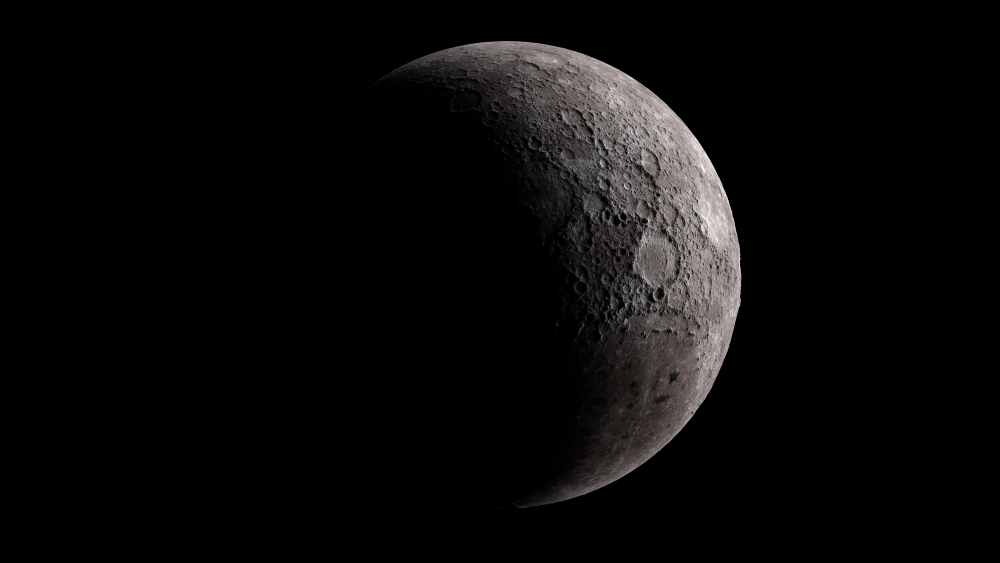Humanity has long been captivated by the dark side of the moon, known for its mystery and opportunities for discovery. For decades, though, the moon’s darkest and most distant regions were thought to be unreachable.
But in August 2023, the Indian Space Research Organization (ISRO) launched the Chandrayaan-3 mission, which became the first spacecraft to land near the moon’s south pole.
Outfitted with groundbreaking temperature detection and chemical analysis technology, Chandrayaan-3 collected the first ever on-the-ground observations of the southernmost lunar surface. Its findings revealed that, amid the darkness of the moon’s poles, there exists the possibility of human survival on the moon, propelling forward human interest in establishing a habitable lunar colony.
Searching for Ice Beneath the Lunar’s Surface
Ever since Apollo 11 brought the first astronauts to the moon in 1969, most lunar landings have centered around the moon’s equator. But the moon’s North and South poles have long fascinated experts, mainly because they’re some of the most likely places on the moon where water ice could exist.
For decades, scientists have searched for water on the moon, in hopes of finding a way to make the harsh environment habitable for humans. But water can’t exist in its liquid form in space — if it does exist on the moon, it’s present either as water vapor, or as ice, frozen beneath the lunar surface.
The moon’s South Pole is home to some of the solar system’s largest, most ancient craters, and because of the angle at which sunlight hits the moon’s surface, most of this polar region hasn’t seen sunlight in billions of years.
While these craters’ immense size, freezing temperatures, and permanent darkness makes them difficult landing sites, it’s these same traits that give them a high potential for holding deposits of water ice. ISRO’s Chandrayaan-1 mission in 2018 confirmed the existence of water ice deposit near the moon’s poles, and experts have since sought to further explore this region and analyze these deposits.
Reaching the moon’s polar extremes is no easy feat — just days before the Chandrayaan-3 mission landed near the lunar South pole, Russia’s Luna-25 mission crashed while trying to reach another polar landing site.
But if water ice is discovered at these sites, it could help sustain astronauts during longer moon missions, and could even be used as drinking water at future lunar colonies.
Read More: The Search for Ice Deposits in Moon Craters
Discovery of Sulfur on the Moon
After the Chandrayaan-3 mission successfully landed near the lunar South Pole on August 22, 2023, the spacecraft’s Vikram rover spent about 10 days exploring the area, conducting the first ever on-the-ground tests of the lunar South Pole’s surface.
For instance, tests conducted on lunar surface composition provided the first confirmation of sulfur on the moon’s surface. Previous moon missions and orbiters had discovered sulfur in tiny amounts, mostly in lunar rocks and minerals.
But the Chandrayaan-3’s Vikram rover was the first to measure the elemental composition of the South Pole directly on the surface, and its laser technology allowed it to provide the most accurate possible measurements, according to a release from the ISRO.
This discovery could pave the way for on-site space station construction in the future: sulfur can be used to create solar cells, fertilizer, and even concrete.
What’s more, higher-than-expected sulfur concentrations could indicate the presence of nearby water ice.
“The sulfur measurement is intriguing because sulfur may point toward the source of the Moon’s water. So, scientists can use temperature as a way of finding where volatiles like these may end up,” writes Paul Hayne of the University of Colorado-Boulder in a November 2023 article in the university’s Arts and Sciences Magazine.
Read More: Earth’s Moon: The Basics of its Origin, Evolution and Exploration
Lunar Soil Is a Powerful Insulator
The mission’s Vikram rover also came equipped with a temperature probe, which collected samples that extended 10 centimeters below the surface of the moon and analyzed their temperatures.
The results: Scientists found that just 8 cm below the surface, the soil was nearly 60 degrees Celsius cooler than it was on the surface.
As the first ever in-situ temperature measurements taken at the moon’s south pole, the discovery revealed that lunar soil is a powerful insulator. Like the discovery of sulfur, this could pave the way for on-site construction projects using soil as insulation.
And with significantly cooler temperatures beneath the surface, it could also indicate the presence of water ice further below. In space, water converts from ice to water vapor at an extremely low temperature of negative 160 degrees Celsius, but powerful insulation from lunar soil could enable water ice deposits to remain in their solid form underground or in deep, shadowed craters.
Read More: Scientists Grow First Plants in Lunar Soil
A Second Space Race
After successfully completing experiments and collecting data on the lunar surface, the Chandrayaan-3 propulsion module was originally intended to remain in orbit around the moon, conducting further observations from afar.
However, the ISRO announced in December 2023 that the spacecraft had used its leftover fuel to re-enter high Earth orbit in November, where it remains today to conduct additional experiments. The propulsion module will remain in orbit for at least one year, though the ISRO has not shared its plans for when the spacecraft runs out of fuel.
Meanwhile on the ground, Chandrayaan-3’s discoveries have prompted a renewed interest in space travel to the moon. NASA is currently planning its Artemis III mission, which aims to send the first humans to explore the lunar south pole as soon as September 2026. China’s Chang’e-7 and Chang’e-8 missions, set to launch in 2026 and 2028 respectively, are also both shooting for the south pole.
With its promise for habitability and unexpectedly robust resources, the lunar south pole has sparked what some experts are calling a “second space race.” As governmental and commercial missions alike seek out water on the dark side of the moon, one thing is certain: the next decade could bring a host of new lunar discoveries, and even a lunar space station.
Read More: Here Are 4 Reasons Why We Are Still Going to the Moon
Article Sources
Our writers at Discovermagazine.com use peer-reviewed studies and high-quality sources for our articles, and our editors review for scientific accuracy and editorial standards. Review the sources used below for this article:





















Discussion about this post